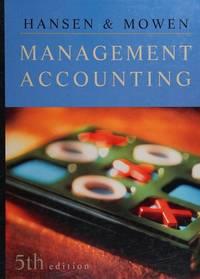Mark Wright, Inc. (MWD) is a specialty frozen-food processor located in the midwestern states. Since its founding
Question:
Mark Wright, Inc. (MWD) is a specialty frozen-food processor located in the midwestern states. Since its founding in 1982, MWI has enjoyed a loyal clientele that is willing to pay premium prices for the high-quality frozen food it prepares from specialized recipes. In the last two years, the company has experienced rapid sales growth in its operating region and has had many inquiries about supplying its products on a national basis. To meet this growth, MWI expanded its processing capabilities, which resulted in increased production and distribution costs. Furthermore, MWI has been encountering pricing pressure from competitors outside its normal marketing region.
Because MW] desires to continue its expansion, Jim Condon, CEO, has engaged a consulting firm to assist MWI in determining its best course of action. The consulting firm recommended instituting a standard costing system that would also facilitate a flexible budgeting system to better accommodate the changes in demand that can be expected when serving an expanding market area. Condon met with his management team and explained the consulting firm’s recommendations. Condon then assigned the task of establishing standard costs to his management team. After discussing the situation with the respective staffs, the management team met to review the matter.
Jane Morgan, purchasing manager, advised that meeting expanded production would necessitate obtaining basic food supplies from other than MWI's traditional sources. This would entail increased raw material and shipping costs and might result in lower-quality supplies. Consequently, these increased costs would need to be made up by the processing department if current costs are to be maintained or reduced.
Stan Walters, processing manager, countered that the need to accelerate processing cycles to increase production, coupled with the possibility of receiving lower-grade supplies, could be expected to result in a slip in quality and a greater product rejection rate. Under these circumstances, per-unit labor utilization could not be maintained or reduced, and forecasting future unit labor content would become very difficult.
Tom Lopez, production engineer, advised that if the equipment is not properly maintained and thoroughly cleaned at prescribed daily intervals, the quality and unique taste of the frozen-food products would probably be affected. Jack Reid, vicepresident of sales, stated that if quality could not be maintained, MWI could not expect to increase sales to the levels projected.
When Condon was apprised of the problems encountered by his management team, he advised them that if agreement could not be reached on the appropriate standards, he would arrange to have them set by the consulting firm and everyone would have to live with the results.
Required:
1. List the major advantages of using a standard costing system.
2. List disadvantages that can result from the use of a standard costing system.
3. Identify those who should participate in setting standards, and describe the benefits of their participation in the standard-setting process.
4. What characteristics of a standard costing system make it an effective tool for cost control?
5. What could be the consequences if Jim Condon, CEO, has the standards set by the outside consulting firm? (CMA adapted) lop5
Step by Step Answer:






